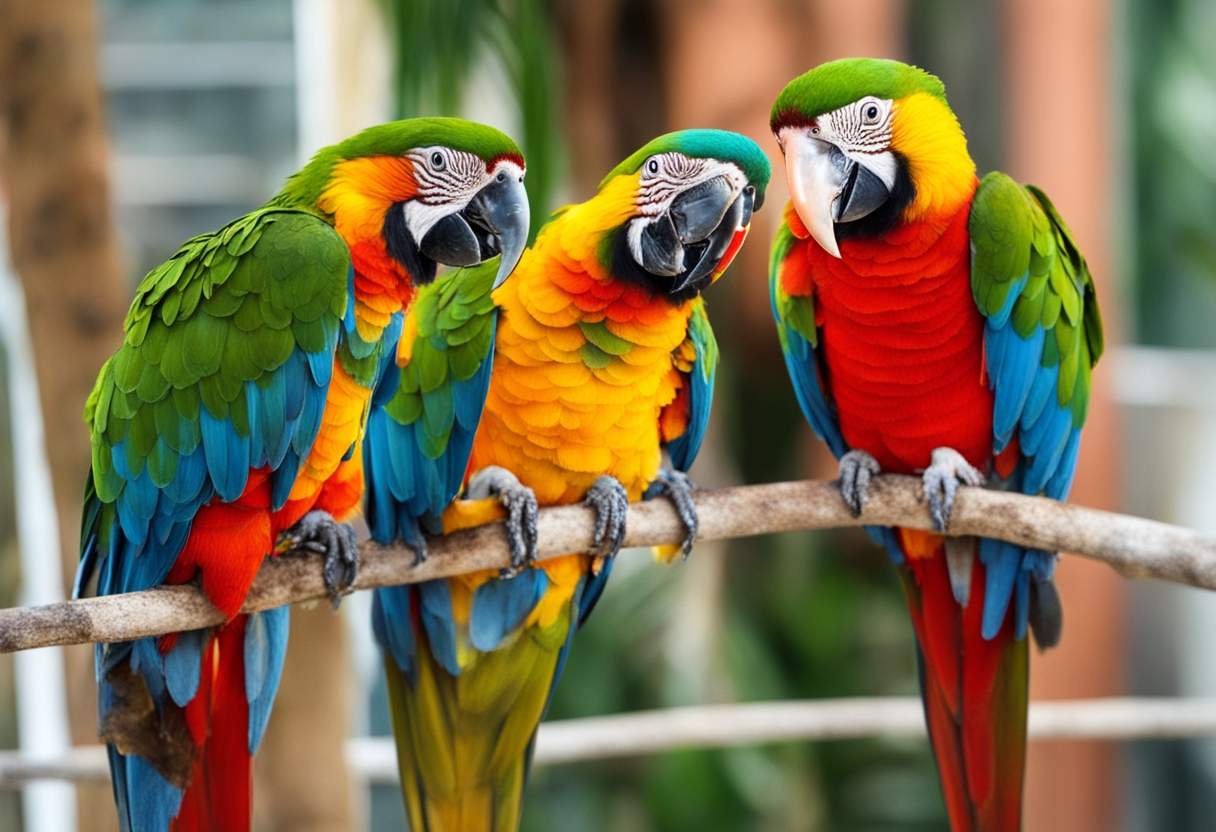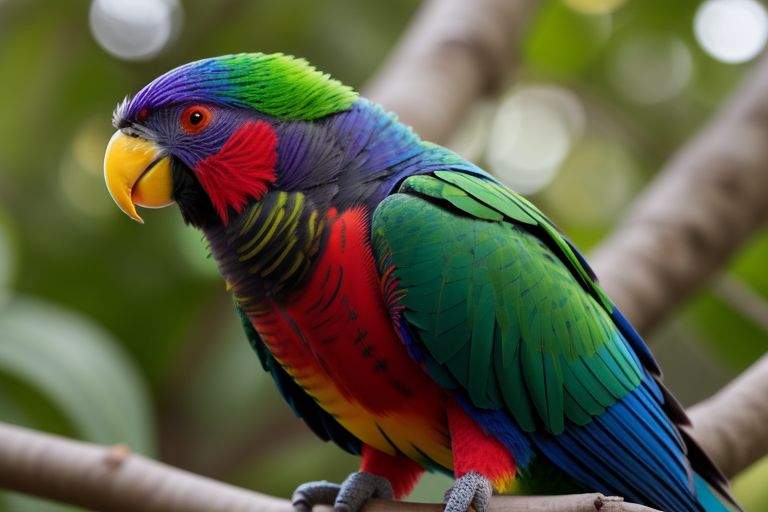
Parrots are among the most captivating and colorful birds on our planet, known for their striking plumage, exceptional intelligence, and remarkable vocal abilities. Belonging to the family Psittacidae, which includes over 393 species, parrots can be found in a wide range of habitats primarily in tropical and subtropical regions. Their allure extends beyond the aesthetic; they play vital ecological roles and have garnered considerable interest in cultural, social, and conservation contexts. This essay seeks to explore the biological characteristics, behavioral traits, ecological significance, and conservation challenges facing parrots in our modern world.
Biological Characteristics
Parrots exhibit a diverse array of physical traits that contribute to their charm and adaptability. Most species possess a strong, curved beak that is ideally suited for cracking nuts and seeds, their primary diet. Their zygodactyl feet – with two toes facing forward and two backward – aid in grasping branches and manipulating food. The size of parrots varies significantly, from the tiny buff-faced pygmy parrot, measuring only 8 cm, to the larger macaws, which can reach lengths exceeding 1 meter.
Coloration in parrots is not merely for aesthetic appeal but serves crucial biological functions. The vibrant hues are primarily attributable to pigments in the feathers and structural coloration, which results from the microscopic structure of the feathers that refracts light. These colors can serve as camouflage in dense foliage, attract mates during courtship, and signal to other individuals within a species. Certain species of parrots exhibit sexual dimorphism, where males and females display different plumage patterns or colors, a characteristic that assists in mate selection.
Cognitive Abilities and Social Behavior
One of the most intriguing aspects of parrots is their intelligence. Studies have shown that parrots exhibit advanced problem-solving skills, the ability to use tools, and a level of social interaction that rivals that of great apes. Research conducted by animal behaviorists has demonstrated that species such as the African gray parrot possess cognitive abilities comparable to those of a five-year-old human child. This intelligence is linked to their complex social structures, where they engage in cooperative behaviors, play, and communication.
Parrots are highly social birds that often live in flocks. Their social nature is crucial for their survival, as it facilitates foraging, predator avoidance, and nurturing of young. In the wild, they communicate through a range of vocalizations, body language, and even mimicking the sounds of their environment. The ability of certain parrot species to mimic human speech has made them popular companions, but these traits go beyond mere entertainment; they reflect the profound social bonds and environmental adaptability present in these species.
Ecological Importance
Parrots play a significant role in maintaining the health of their ecosystems. By feeding on seeds, fruits, and nuts, parrots contribute to seed dispersal, facilitating forest regeneration and plant diversity. Some species, such as the yellow-shouldered parrot, are essential for spreading seeds of specific plants, thereby helping to shape their habitats. This ecological function underlines the importance of preserving parrot populations, as their decline can disrupt local biodiversity and ecosystems.
Additionally, parrots serve as indicators of environmental health. Their sensitivity to habitat changes, primarily due to deforestation and climate change, makes them an important focal species for conservation efforts. Regions rich in parrot diversity often represent areas of high biodiversity, highlighting the interconnectivity of avian health and broader ecological stability.
Conservation Challenges
Despite their ecological significance and captivating characteristics, many parrot species face grave conservation challenges. Habitat destruction, driven by logging, agricultural expansion, and urban development, has severely diminished the natural habitats of parrots worldwide. The International Union for Conservation of Nature (IUCN) lists numerous parrot species as endangered or vulnerable due to these pressures. Moreover, illegal trapping and trade in wild parrots have exacerbated their decline, motivated by both demand for pets and the exotic bird trade.
Conservation efforts have emerged in response to these challenges, focusing on habitat protection, restoration, and the establishment of wildlife corridors. Initiatives such as captive breeding programs and community engagement in conservation highlight the importance of localized action. Organizations globally work to educate and involve local communities, emphasizing the ecological value of parrots and fostering sustainable practices that protect these vital species.
Conclusion
Parrots are not merely colorful companions; they are complex, intelligent, and ecologically significant beings that embody the wonders of avian life. Understanding their biology, behavioral traits, and ecological roles helps deepen our appreciation for these creatures and highlights the urgency of their conservation. As human activity continues to threaten their existence, we bear a collective responsibility to advocate for the protection of their habitats and the promotion of sustainable practices that ensure the survival of parrots for generations to come. A future where these vibrant birds continue to soar through the skies, contributing to the beauty and balance of our natural world, depends on our commitment and action today. https://sumangodanu.com/the-resplendent-peacock-unveiling-the-majesty-of-natures-most-iconic-bird/









